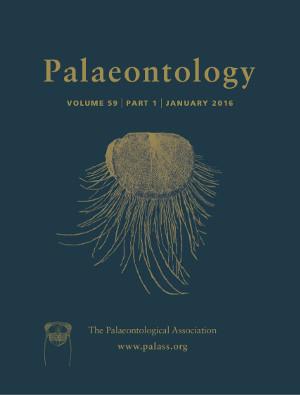Reg. Charity No. 1168330

A new genus and species of phosphatic-shelled eolepadid barnacle from the Posidonia Shale (Toarcian, falciferum Zone) of Zell u. Aichelberg, southern Germany, is described as Toarcolepas mutans gen. et sp. nov. Numerous disarticulated individuals, associated with fossil wood, are present in a piece of concretionary limestone, and these are interpreted as having lived epiplanktonically attached to driftwood. The taxonomy of the Late Triassic – Early Cretaceous family Eolepadidae is reviewed, and two further species (T. gaveyi (Withers, 1920) and T. lotharingica (Méchin, 1901)) are referred to Toarcolepas. The chemistry of valve composition of the Carboniferous Praelepas and Triassic–Jurassic eolepadid cirripedes is investigated using X-ray dispersive analysis, and the ubiquitous presence of abundant phosphorus is taken as evidence that these taxa had a primary phosphatic composition, now preserved as francolite. A significant change in shell chemistry from phosphate to calcium carbonate took place during the evolution of the Thoracica, during the Late Triassic or Early Jurassic. The driving force behind this change may have been related to the reduced predation pressure associated with acquisition of an epiplanktonic mode of life. Calcite is softer, but energetically cheaper to deposit than phosphate mineral phases.